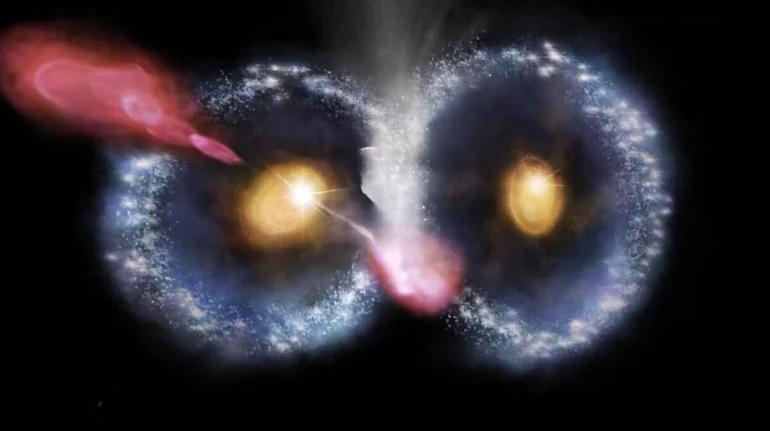
Cosmic Owl Spotted in Deep Space
The James Webb Space Telescope (JWST) has made a groundbreaking discovery in the field of astronomy, capturing a rare and breathtaking phenomenon in deep space. Dubbed the “Cosmic Owl”, this celestial wonder is composed of two ring galaxies colliding, with each galaxy hosting a supermassive black hole at its center. This extraordinary event has left scientists thrilled and eager to learn more about the mysteries of the universe.
According to a recent article by Moneycontrol, the Cosmic Owl was spotted by the James Webb Space Telescope, a revolutionary space observatory designed to explore the universe in unprecedented detail. The telescope’s advanced sensors and cameras have enabled scientists to capture stunning images of the Cosmic Owl, offering a glimpse into the distant past.
So, what exactly is the Cosmic Owl? In simple terms, it is a rare ring galaxy collision, where two massive galaxies are merging to form a new, larger galaxy. Each of these ring galaxies is approximately 26,000 light-years wide, making them enormous structures in the universe. The collision itself is a complex process, involving the gravitational interaction between the two galaxies.
The most striking feature of the Cosmic Owl, however, is the presence of supermassive black holes at the center of each galaxy. These black holes are incredibly massive, with some having the mass of billions of suns. As the galaxies collide, the black holes are drawn towards each other, creating a spectacular display of gravity and energy.
The James Webb Space Telescope’s detection of the Cosmic Owl is a significant milestone in the field of astronomy. The telescope’s advanced technology has enabled scientists to study the universe in unprecedented detail, providing insights into the formation and evolution of galaxies.
The Cosmic Owl is not only a breathtaking sight but also offers scientists a unique opportunity to study the dynamics of galaxy collisions. By analyzing the data collected by the James Webb Space Telescope, scientists can gain a deeper understanding of the processes involved in galaxy formation and evolution.
The discovery of the Cosmic Owl has sparked widespread excitement among astronomers and scientists, who are eager to learn more about this phenomenon. The James Webb Space Telescope’s findings have shed new light on the mysteries of the universe, highlighting the incredible complexity and beauty of celestial events.
In conclusion, the Cosmic Owl is a rare and awe-inspiring phenomenon that has captured the imagination of scientists and the public alike. The James Webb Space Telescope’s detection of this cosmic wonder is a testament to the power of advanced technology and the wonders that await us in the vast expanse of deep space.
Source:






